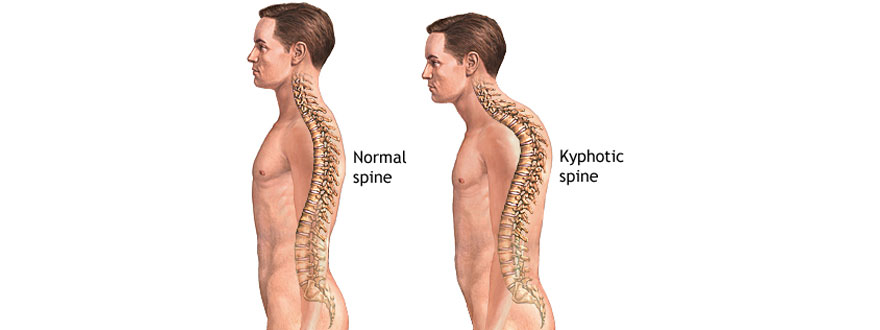kyphosis

Kyphosis is a spinal disorder characterized by an excessive outward curvature of the spine, resulting in a rounded or hunched back appearance. This curvature typically occurs in the thoracic spine (upper back) but can also affect the cervical (neck) or lumbar (lower back) regions. Kyphosis can develop gradually over time or occur suddenly due to injury or disease.
Here's an overview of kyphosis:
- Symptoms:
- The primary symptom of kyphosis is an abnormal curvature of the spine, resulting in a rounded or hunched back appearance.
- Other symptoms may include back pain, stiffness, and muscle fatigue, particularly in the upper back.
- Severe kyphosis can lead to compression of the spinal nerves or spinal cord, causing neurological symptoms such as numbness, weakness, or difficulty walking.
- Diagnosis: Kyphosis is typically diagnosed based on a physical examination, medical history, and imaging studies such as X-rays, MRI, or CT scans to evaluate the curvature of the spine and assess for underlying causes such as vertebral fractures or structural abnormalities.
- Prognosis: The prognosis for kyphosis varies depending on factors such as the underlying cause, severity of spinal curvature, and effectiveness of treatment. Many cases of kyphosis can be managed successfully with conservative treatments such as physical therapy, bracing, and medication. Surgical intervention may be required in severe or progressive cases of kyphosis to correct spinal deformity, alleviate symptoms, and prevent complications.


